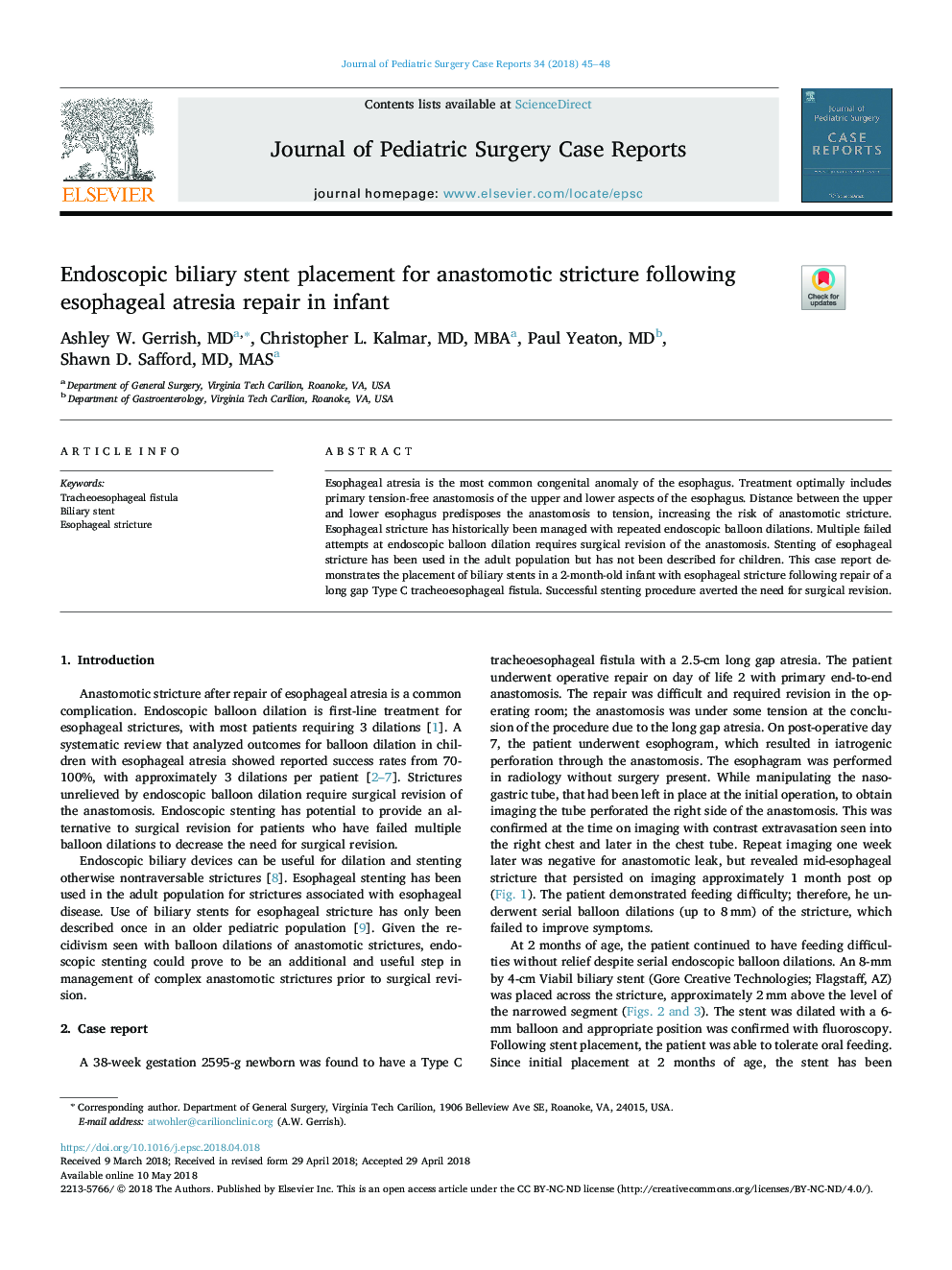| Article ID | Journal | Published Year | Pages | File Type |
|---|---|---|---|---|
| 8810864 | Journal of Pediatric Surgery Case Reports | 2018 | 4 Pages |
Abstract
Esophageal atresia is the most common congenital anomaly of the esophagus. Treatment optimally includes primary tension-free anastomosis of the upper and lower aspects of the esophagus. Distance between the upper and lower esophagus predisposes the anastomosis to tension, increasing the risk of anastomotic stricture. Esophageal stricture has historically been managed with repeated endoscopic balloon dilations. Multiple failed attempts at endoscopic balloon dilation requires surgical revision of the anastomosis. Stenting of esophageal stricture has been used in the adult population but has not been described for children. This case report demonstrates the placement of biliary stents in a 2-month-old infant with esophageal stricture following repair of a long gap Type C tracheoesophageal fistula. Successful stenting procedure averted the need for surgical revision.
Related Topics
Health Sciences
Medicine and Dentistry
Perinatology, Pediatrics and Child Health
Authors
Ashley W. MD, Christopher L. MD, MBA, Paul MD, Shawn D. MD, MAS,
